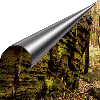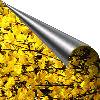

 | Tatrzanski National Park |  |




 | Tatrzanski National Park |  |


The Tatrzanski National Park was established on January 1, 1955. Its total area is 21,164 ha. Land use includes forests - 71 %, waters - 1 %, rocks and pastures - 26 %, arable grounds - 1 %, and urban area - 1 %. Strict reserves comprise 11,514 ha. The Tatra Mountains are among the World Biosphere Reserves in Poland. A museum of the Park presenting exhibits of flora, fauna and geology of the Tatra Mountains is located in Zakopane.
The symbol of the Park is the chamois (Rupicapra rupicapra), the preservation of which was attempted first in 1815 and which in 1869 was made subject to the law on the preservation of chamois and alpine marmots, i.e. "alpine animals". At present the population of chamois amounts to 160 animals and there are concerns about this number being too small. Because of its popularity, the Park is under severe stress year round, with visitors reaching up to 3,000,000 annually. The closest tourist center is Zakopane, which is located on the border of the park. Zakopane is famous for is highlander folklore, including original folk costumes and characteristic architecture. Every year Zakopane hosts the International Festival of the Highlanders' Folklore. The Tatras offer many summer and winter sport activities. Adjacent to this park is the Tatra National Park on the territory of the Slovak Republic.
Natural values
The Tatra Mountains is the only range in Poland, which is alpine in a character. It is the highest range of the Central Carpathians. The mountains rise steeply from a high plateau, and extend for approximately 64 km along the Slovakian-Polish border, varying in width from 14 to 24 km. Over 300 peaks are identified by name and measured elevation. There are no glaciers or permanent snowfields in the range. The highest mountain in the Polish Tatras is Mount Rysy, which raises to a height of 2,499 m above sea level. Another high peak, Kasprowy Wierch, offers excellent skiing conditions until May.
The western part of the Tatry massif is made up of Mesozoic limestone and dolomite, while the eastern part is made of Paleozoic granite. The correlation between topography and geological structure is clearly visible in the Tatra Mountains. Water erodes away the limestone and dolomite, flattening the tops, carving deep ravines and valleys, and creating many caves. At the same time, the resistant granites are weathered into a sharply edged, majestic and towering mountain range. The Tatra Mountains were also affected by the mountainous glaciers in the Quaternary period, and this accounts for many post-glacial depressions, hanging valleys, moraines, as well as picturesque high-lying post-glacial lakes such as Morskie Oko (the Sea's Eye, 34.5 ha), Wielki Staw Polski (the Great Polish Pond, with a depth of 79.3 m) and Czarny Staw (Black Pond), all filling in the post-glacial ravines.
Vegetation
The vertical layering of vegetation is clearly present in the Tatra Mountains. The lower mountain forest reaches to a height of 1,250 m above sea level, and is mainly made up of spruce. The fast-growing spruce trees were planted here during the 19th century, following the clear-cutting of the original beech and fir forests. Above this zone, on the upper mountain level, a fir forest grows. The altitude between 1,550 and 1,800 m above sea level is dominated by dwarfed pine. The mountain slopes above 2,000 m belong to the alpine zone. The higher parts of the mountains are covered with mountainous pastures, which reach to a height of 2,300 m above sea level. In this zone the Tatra larkspur (Delphinum oxysepalum) may be found frequently. The loftiest and highest zone is that of the rocky peaks themselves.
Fauna
The chamois and marmot are the most characteristic mammals living in these mountains. Stag, roe, deer, bear, lynx, roe deer, and many bird species, including the eagles (Aquila crysaetos) may also be seen here.
Satellite image of the Tatra Mountains - Polish part (© NEOKART 1994)



If you know any WWW sites that reference Polish National Parks please e-mail them to me.
Your input will be greatly appreciated.